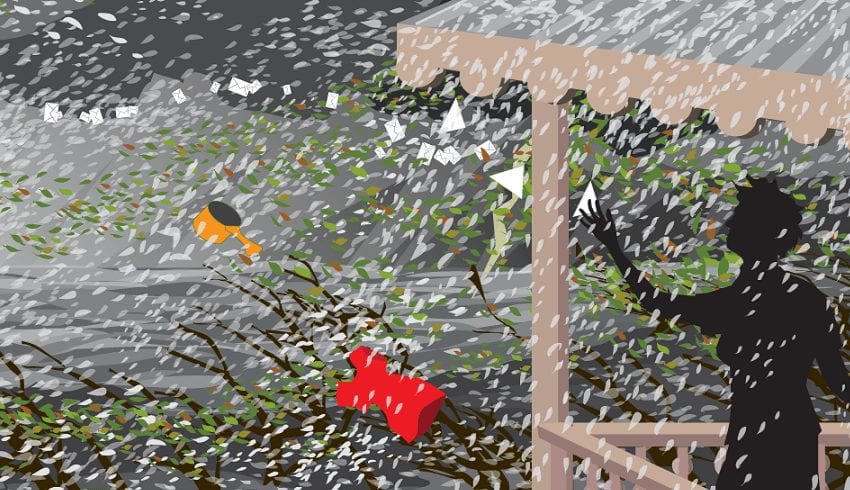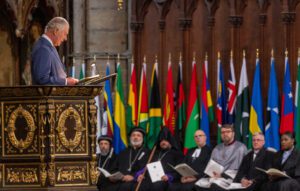I was living on Long Island, New York when Hurricane Donna came through in 1960. I was a kid, how could I know that this same storm had just past over and pretty much devastated Anguilla, the Caribbean island I would one day call my home.
We lived on a peninsula, water on three sides and our whole neighbourhood flooded including our basement, garage and playroom. By that time Donna had lost most of her energy, just dumping the rest of her water on us. The storm destroyed most of my mother’s photographs stored in the basement but what I remember was my sister and I throwing bits of paper from the steps of the kitchen into the flooded playroom like little sailboats floating in the current.
In 1992, I packed up, sold everything I didn’t need and moved from the U.S. to Anguilla and purchased a house, a concrete house. After a lifetime of cold weather and grey days, this was a perfect choice, always warm, stunning blue sky, palm trees swaying and crystal clear water.
I stood on the balcony of my new house and wondered why there was so much land available on the sea coast, why didn’t Anguillians want this stunning view. You live you learn; I know why now.
Folks on Anguilla didn’t talk much about hurricanes. We have a hurricane season. It starts in June and ends in November. Everybody knows that, even little kids on Anguilla. There hadn’t been any since I arrived, in fact there hadn’t been any of note since the big one in 1960, Hurricane Donna. She took five lives and destroyed most of the houses on the island. Anguilla has a small population, everybody knew everybody, and it is still that way today. Five people is a lot of people to lose, family, friends, the ones you say good morning to every morning. So now most everyone has a concrete house and most of them have a concrete roof. You don’t have to tell an Anguillian more than once when it comes to a sensible thing to do.
It was Hurricane Donna that made that decision for them.
*
Anguilla never had much help from anybody so people learned to take care of their own problems. Independent? Absolutely. Bull headed? I would say more often than not. But sensible – yes they are. You have to be strong to live on a small piece of rock with very little rain and few natural resources.
By 1995, I had settled into island life, it was a steep learning curve but I was ready for adventure and I got plenty of that. Heading into the late summer months there was talk of ‘weather’. When island people say weather they mean hurricanes. Aside from the occasional storm, days in the Caribbean are mostly the same, hot, a little breeze, once in a while a bit of rain.
I was working as an artist on a mural for a popular West End seaside restaurant and my work was almost done. Back then we did not have intricate weather systems alerting us every minute like we have all over the internet today. We did not have the internet full stop. News channels and radio programmes broadcasting from the U.S. don’t care about hurricanes in the Caribbean until those storms threaten America. But we did have some reports, not always accurate, but good enough. When you know something is coming you start to prepare.
There was a report of a storm, they all said it would pass us by, maybe some rain, rain is good we always need rain. It came and went, no damage, no problem. So when the next report came in, everyone had sort of relaxed. ‘Probably go the same as the last one.’ ‘We’ll keep a watch but it’s a ways away.’
I remember two days out. We had a party at my neighbours, a ‘hurricane’ party. People laughed, said what an experience a hurricane is, we all made a toast. I was quiet, a little nervous but most were not. Someone talks about how great it would be to experience a storm has never been in a hurricane. I don’t laugh or argue with them anymore, I just wish that was one memory I didn’t have.
The day before Luis arrived, 4 September 1995, it was sunny with a light breeze, too light really and hot; it’s always hot. I stood on the Marl Road on the Sea Rocks, high up looking east past Scrub, marvelling at what a lovely day.
But on that lovely day all hell broke loose on Anguilla. The storm was coming. The storm was big. Get ready. Get ready now. Serious.
I did the best I could. Nailed sheets of ply over the big glass doors on the north side of the house. What did I know? I know better now. Sheets of ply, yeah right. First you don’t use nails, hurricane eat them up and spit them out like little bones in your fried snapper. Screws, big screws are the only things that stand a chance against any storm higher than a cat 2.
We now have hurricane shutters that close the house up tight, but you have to leave a window open for the pressure, because hurricanes have pressure that needs to be released (what did I know?). I cleared out most, but not all, of the main room furniture into a small bedroom, that was the smartest thing I did and then I simply ran out of time. The house is on the sea but high up on a ridge and when the breeze came back, you could feel the difference, it had returned with purpose. I got a call from my sister in Florida. She had friends who went through Andrew. I told her what I had done, prep’ work: water, clean up, best I could. She said, in a funny way, ‘But are you ready?’ I laughed, ‘Well I’ve done the best I can.’ I can still today hear her words exactly the way she said them. ‘You’re not ready.’ She was right, I was not.








